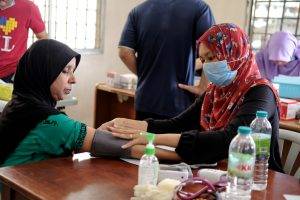New data from the World Health Organization (WHO) and the International Agency for Research on Cancer (IARC) reveals a startling prediction: global cancer cases are expected to surge by 77% by 2050.
This increase, based on the 2022 estimates of 20 million new cases and 9.7 million deaths, highlights an urgent need for enhanced global health strategies. The statistics also highlight a concerning lifetime risk of cancer, affecting approximately one in five individuals.
The Escalating Global Cancer Burden
The world is facing a looming health challenge of unprecedented scale. According to the latest estimates by the WHO and IARC, the global burden of cancer is not just a present concern but an escalating crisis. In 2022, the world witnessed around 20 million new cancer cases and 9.7 million deaths, painting a grim picture of the current state of global health.
These figures are more than just numbers; they represent a stark reality that cancer is becoming an increasingly common part of human life. The risk varies by gender, with about one in nine men and one in twelve women likely to die from the disease.
This escalating trend is a clarion call for immediate action, highlighting the need for robust health systems, advanced research, and equitable access to healthcare services globally. The projection of a 77% increase in cancer cases by 2050 is not just a warning, but a call to action for the global community to unite in the fight against this growing threat.
Exploring the Drivers Behind the Rising Cancer Burden
Despite advancements in technology and medical research, the global burden of cancer continues to escalate. This seemingly paradoxical situation can be attributed to several key factors that are driving the increase in cancer cases worldwide.
- Ageing Populations: One of the most significant contributors to the rising cancer burden is the ageing global population. As life expectancy increases, more people live to an age where cancer becomes a greater risk. Older individuals are more likely to develop cancer simply because the likelihood of cancerous mutations in cells increases with age.
- Lifestyle Factors: Changes in lifestyle choices play a crucial role in the increasing incidence of cancer. Factors such as tobacco use, unhealthy diets, physical inactivity, and excessive alcohol consumption are well-established risk factors for various types of cancer.
- Environmental and Occupational Risks: Exposure to carcinogens in the environment and the workplace continues to be a significant risk factor. This includes air pollution, exposure to certain chemicals, and radiation.
- Population Growth: The sheer increase in the global population also contributes to the rising number of cancer cases. With more people, even if the incidence rates per capita remain constant, the absolute number of cancer cases will naturally increase.
- Improved Detection and Reporting: Paradoxically, improvements in cancer detection and reporting can lead to an apparent increase in cancer cases. As screening methods become more sophisticated and accessible, cancers that might previously have gone undetected are now being diagnosed.
- Socioeconomic Development: The link between socioeconomic development and cancer incidence is complex. While development can lead to improved healthcare and cancer detection, it also often leads to lifestyle changes that can increase cancer risk. Furthermore, developing countries may lack adequate healthcare infrastructure to effectively manage and treat cancer, leading to higher mortality rates.
Addressing the Disparities in Cancer Care and Treatment
The global landscape of cancer care and treatment is marked by significant disparities. These disparities are evident in several key areas:
- Access to Healthcare Services: There is a stark contrast in access to healthcare services between high-income and low-income countries. In many high-income countries, advanced diagnostic tools, treatments, and palliative care services are more readily available. This leads to earlier detection and better survival rates. Conversely, in low-income countries, limited access to such services results in late-stage diagnosis and lower survival rates.
- Quality of Treatment: The quality of cancer treatment varies greatly across different regions. High-income countries typically have access to state-of-the-art treatment options, including targeted therapies and immunotherapies, which tend to be out of reach in less developed regions. This gap in treatment quality directly impacts survival outcomes.
- Awareness and Education: Public awareness and education about cancer prevention, early detection, and treatment options are crucial. However, there is a lack of adequate cancer education and awareness programs in low-income countries. This contributes to late diagnoses and poor understanding of treatment options.
- Economic Barriers: The financial cost of cancer treatment can be prohibitive, especially in countries without universal healthcare coverage. This economic barrier prevents many individuals from seeking or continuing treatment, leading to worse outcomes.
- Cultural and Social Factors: Cultural beliefs and social stigma associated with cancer can hinder individuals from seeking timely medical advice and treatment. This is particularly pronounced in regions where there is a lack of understanding about the disease.
Navigating the Future of Cancer Care
Looking towards 2050 and the projected 77% increase in global cancer cases, we need to take a multifaceted approach to tackle this challenge effectively. We should focus on enhancing healthcare systems for better diagnosis and treatment, boosting research for new and innovative therapies, and emphasizing the importance of prevention and early detection.
The global community’s collective effort is key in this battle against cancer. By joining forces, sharing knowledge, and supporting each other, there’s hope to change the trajectory of this disease.
References
- Global cancer burden growing, amidst mounting need for services. (2024, February 1). https://www.who.int/news/item/01-02-2024-global-cancer-burden-growing–amidst-mounting-need-for-services













